Checking in With Our Hypotheses
We’ve been on the Palmer for 20 days, we’ve been to 49 sampling stations, taken thousands of water samples, flown three separate gliders, and started dozens of incubations. So, have we learned anything?
It’s not a rude question—for decades oceanographers have been mostly unable to look at the results of their work until after they get back from sea. The analysis techniques are just too difficult and time-consuming to get done while on board. If the researchers were searching down a blind alley, they couldn’t know it until it was too late to change course.
On this expedition the scientists see results from four studies while they are under way: Dr. Josh Kohut’s gliders, Dr. Chris Measures’s trace metals, Dr. Allen Milligan’s and Dr. Angelicque White’s photosynthesis measurements, and Dr. Adam Kustka’s incubation experiments.
They’re using this information to do what’s called ‘adaptive sampling’—adjusting their studies based on what they see. For example, today is the last day for Dr. Adam Kustka to start his 9-day incubation experiments. After today, we’ll be at the McMurdo dock, and all packed up, before the incubations get a chance to finish.
To be sure he was making good use of the time, Dr. Kustka and the rest of the science team reviewed what we’d learned so far and what we still needed to know. Read on through the slideshow to see what we’ve found out about MCDW in the last three weeks:
- The scientists have been trying to learn whether Modified Circumpolar Deep Water brings iron to the surface of the Ross Sea to fuel phytoplankton blooms. In our Jan. 23 post we broke down this idea into 6 parts that 6 teams of experts on this expedition were studying. Let’s check in on how they’re doing on each part. This kind of review is the same way the scientists chose what to study for their remaining week at sea.
- Yes. Thanks to many CTD pro and glider missions, the scientists have positively identified MCDW in several parts of the northern Ross Sea. We know it when we see it because MCDW has a characteristic temperature and salinity signature that makes its density different from surrounding waters (see Jan. 22 post). We’ve found the strongest indications of MCDW along the western sides of two shallow underwater plateaus, the Mawson Bank and the Pennell Bank. In this case, shallow means about 650 feet deep—shallow enough that icebergs on our horizon have run aground against them.
- Yes, at least a little.The MCDW contains about twice as much iron as surface water. That’s the same amount of iron as Circumpolar Deep Water, which is the kind of water MCDW came from (see Jan. 22 post). This finding surprised the scientists. They had expected that MCDW would acquire more iron as it washed up from deep water onto the shallower floor of the Ross Sea. ‘It may be getting modified, Dr. Measures said of the Modified Circumpolar Deep Water, ‘but its iron content isn’t.’ Here, he and Dr. Mariko Hatta discuss their analyses inside the trace-metal lab on the main deck (see Jan. 26 post).
- Dr. Hatta spends much of her day inside the trace-metal van, analyzing water to answer this question. One way the trace-metal team does this is by measuring a couple of other metals. The seafloor tends to collect manganese as well as iron. When currents mix sediment from the seafloor into the water, both elements get picked up at the same time. The other main way iron gets into the ocean is from storms that blow iron-rich dust into the sea. That dust has aluminum in it, but not manganese. By measuring iron, manganese, and aluminum at the same time, the team can learn whether the iron came from the ocean floor or the atmosphere.
- So far, the iron dissolved in MCDW doesn’t seem to have come from the seafloor—there’s almost no manganese in the water samples. Another possibility is that the iron is not dissolved in the water, but is in the form of tiny particles. The two kinds of iron have different chemical properties, so they have to be analyzed separately. Dr. Phoebe Lam filters large volumes of water to collect particles for analysis—though this is one procedure that has to be done back on shore.
- The MCDW doesn’t pick up many particles as it travels up from deep water into the Ross Sea, according to Dr. Measures’s analyses. But it’s possible that it does pick up iron-rich sediments while it’s in the Ross Sea, as tidal forces push the water against the Pennell or Mawson Banks. Dr. Lam has started studying this by collecting seafloor mud from areas we visit. We’ll cover this part of her work later in the week.
- This is a tricky question to answer. MCDW gets harder to recognize as it nears the surface water. That’s because MCDW is denser than surface water (see Jan. 22 post), so it can only reach the surface water by mixing with it. And as it mixes, its unique temperature and salinity characteristics fade away. So far, results suggest that the amount of iron MCDW contains could be responsible for the amount of phytoplankton that has bloomed on top of Pennell Bank.
- Dr. Adam Kustka’s team has been doing controlled experiments to simulate the way that mixing happens naturally. He takes surface water and adds a sample of MCDW he has collected at depth. Then, for the next 9 days, he keeps the water at an outdoor temperature under the constant light of the Blue Room (see Jan. 27 post). So far, MCDW has not made the phytoplankton grow more rapidly than they do in surface water that had no added MCDW. But there are a few interesting ways that MCDW could still be having an effect on phytoplankton. We’ll explore those tomorrow.
Read more in the following posts:
- Getting to Know MCDW (Jan 22)
- How Scientists Look for the Truth (Jan 23)
- A Little Iron Goes a Long Way (Jan 26)
- Where Biology and Chemistry Meet (Jan 27)


 February 7, 2011
February 7, 2011 
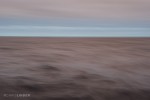
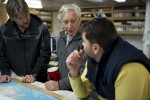
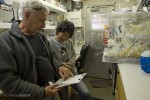
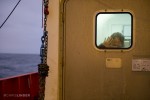

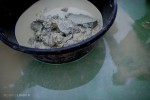
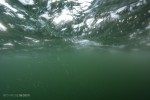
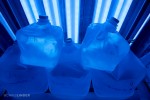







4 Responses to “Checking in With Our Hypotheses”